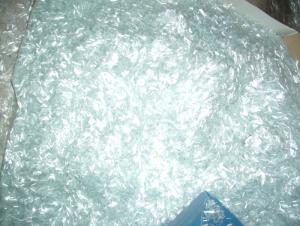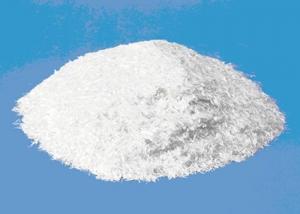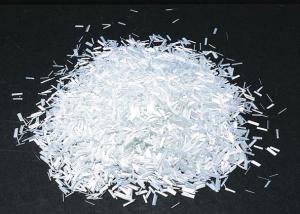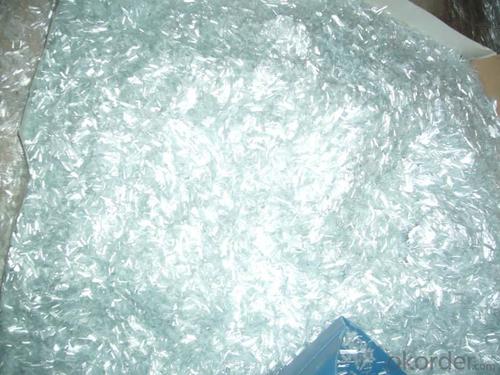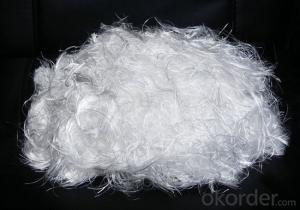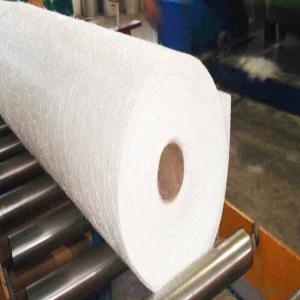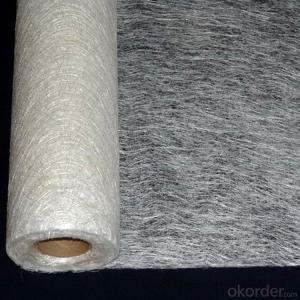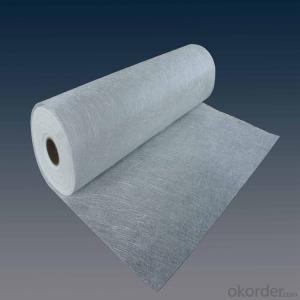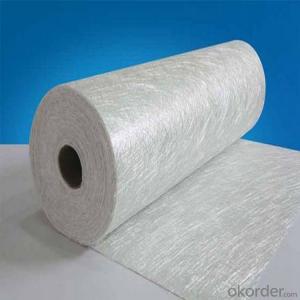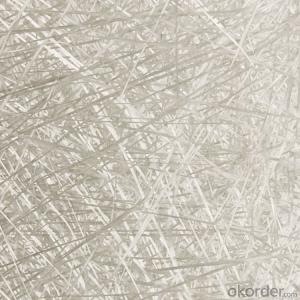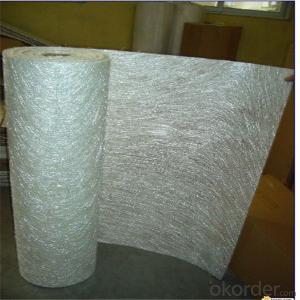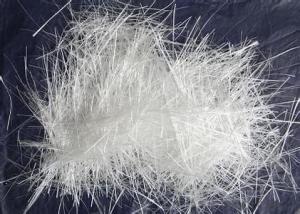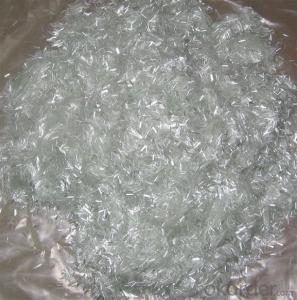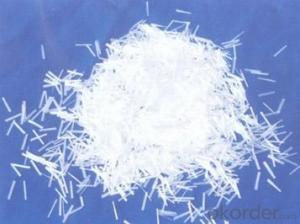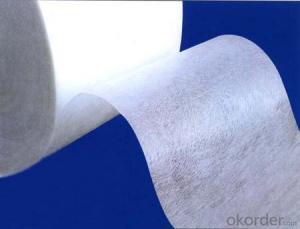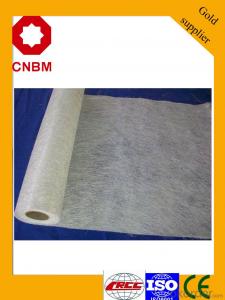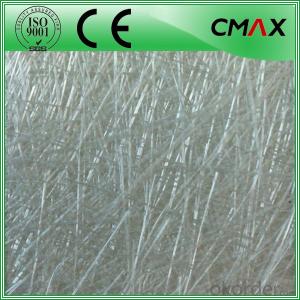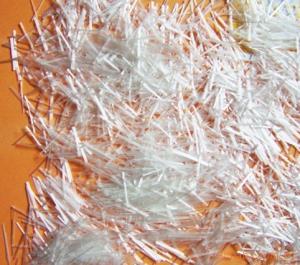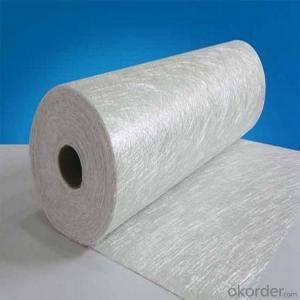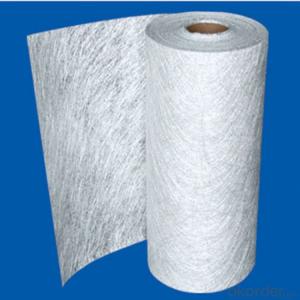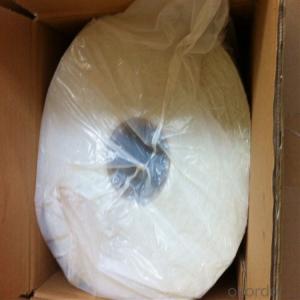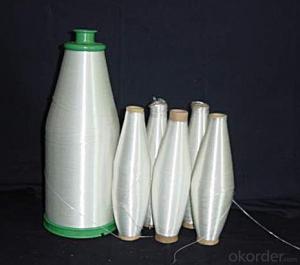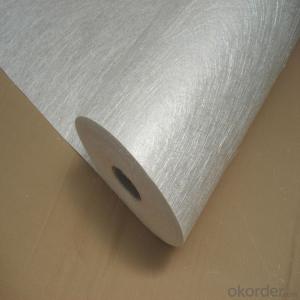Fiberglass Chopped Strands Mat for BMC e-Glass Fiber
- Loading Port:
- China Main Port
- Payment Terms:
- TT or L/C
- Min Order Qty:
- 1 ton kg
- Supply Capability:
- 500 Tons Per Month kg/month
OKorder Service Pledge
OKorder Financial Service
You Might Also Like
Introduction of E-Glass Fiber Chopped Strands For BMC
E-Glass Chopped Strands for BMCare widely used in transportation,construction,electronics,chemical industry and light industry,such as the automotive parts,insulator,and switch boxes.
Product Features of E-Glass Fiber Chopped Strands For BMC
1.Low viscosity and excellent flowability of the BMC paste
2.Low static and low fuzz, fast and good dispersion in resins
3.Good processing and excellent mechanical properties
Packaging of E-Glass Fiber Chopped Strands For BMC
The product can be packed in bulk bags, heavy-duty box and composite plastic woven bags;
For example:Bulk bags can hold 500kg-1000kg each; Cardboard boxes and composite plastic woven bags can hold 15kg-25kg each.
Storage of E-Glass Fiber Chopped Strands For BMC
Unless otherwise specified, fiberglass products should be stored in a dry, cool and rain-proof area. It is recommended that the room temperature and humidity should be always maintained at 15ć-35ćand 35%-65% respectively.
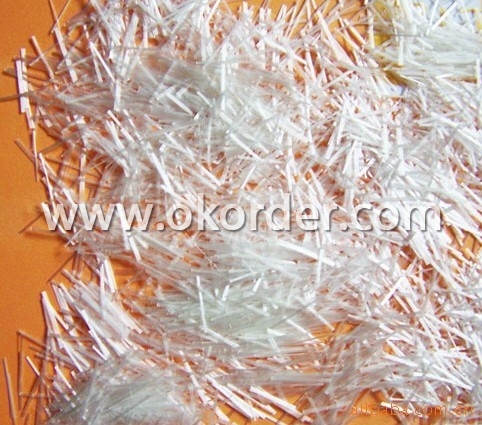
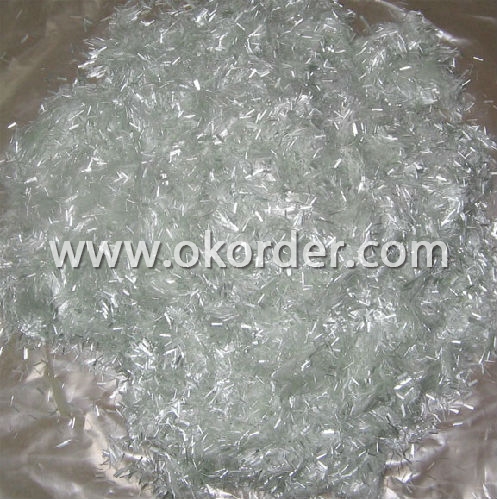
- Q: Can fiberglass chopped strand be used in the production of wind turbine blades?
- Yes, fiberglass chopped strand can be used in the production of wind turbine blades. Fiberglass chopped strand is a commonly used reinforcement material in composite manufacturing, and it offers several advantages for wind turbine blade production. Firstly, fiberglass chopped strand has excellent tensile strength and stiffness, which are essential properties for wind turbine blades to withstand the aerodynamic forces and loads. It helps to enhance the structural integrity of the blades, making them more durable and resistant to fatigue. Secondly, fiberglass chopped strand has good resistance to corrosion and environmental degradation. This is particularly important for wind turbine blades as they are exposed to various weather conditions and elements, such as UV radiation, moisture, and temperature variations. The use of fiberglass chopped strand in the blade construction helps to ensure long-term performance and reliability. Furthermore, fiberglass chopped strand is lightweight, which is advantageous for wind turbine blades. The lighter the blades, the easier it is for the turbine to capture wind energy and rotate efficiently. The use of fiberglass chopped strand helps to reduce the overall weight of the blades while maintaining their strength and stiffness. In conclusion, fiberglass chopped strand is a suitable material for the production of wind turbine blades due to its high tensile strength, corrosion resistance, and lightweight properties. It contributes to the overall performance, durability, and efficiency of wind turbines, making it a preferred choice in the industry.
- Q: Can fiberglass chopped strand be used in aerospace structures?
- Yes, fiberglass chopped strand can be used in aerospace structures. Fiberglass is a lightweight and strong material that offers excellent strength-to-weight ratio and resistance to corrosion, making it suitable for aerospace applications. Chopped strand mat, which is made up of short strands of fiberglass held together by a binder, can be used in the construction of aerospace structures such as aircraft interiors, cabin components, and non-structural panels. However, it is important to note that specific design and engineering requirements need to be met to ensure the suitability of fiberglass chopped strand for aerospace use, including compliance with regulatory standards and industry specifications.
- Q: Is fiberglass chopped strand compatible with different release agents?
- Yes, fiberglass chopped strand is generally compatible with different release agents. However, it is important to ensure that the specific release agent chosen is compatible with the resin system being used and meets the requirements of the application.
- Q: Can fiberglass chopped strand be used in the production of sporting goods?
- Yes, fiberglass chopped strand can be used in the production of sporting goods. It is commonly used in the manufacturing of sporting equipment such as hockey sticks, surfboards, and skis due to its high strength and lightweight properties.
- Q: How does the stiffness of the chopped strand affect its performance?
- The stiffness of the chopped strand directly affects its performance as it plays a vital role in determining the strength, durability, and overall effectiveness of the product. A stiffer chopped strand typically results in a higher tensile strength, improved dimensional stability, and enhanced resistance to deformation or breakage. This stiffness also contributes to better mechanical properties and allows for more effective reinforcement in composite materials. Consequently, the performance of the chopped strand is significantly influenced by its stiffness, making it a crucial factor to consider in various applications.
- Q: How does the fiber volume fraction affect the properties of fiberglass chopped strand?
- The fiber volume fraction refers to the ratio of the volume of fibers to the total volume of the composite material. In the case of fiberglass chopped strand, increasing the fiber volume fraction typically leads to improvements in several properties. One of the main benefits of increasing the fiber volume fraction is the enhancement in the mechanical strength of the material. Fiberglass chopped strand consists of short fibers randomly dispersed within a matrix material, such as epoxy resin. When the fiber volume fraction is increased, the number of fibers per unit volume also increases, resulting in an increased load-bearing capacity. This leads to improved tensile, compressive, and flexural strength of the composite material. Furthermore, increasing the fiber volume fraction also enhances the stiffness and rigidity of the fiberglass chopped strand composite. The fibers act as reinforcements, effectively transferring stress and strain throughout the material. This results in reduced deformation and improved dimensional stability under load. The increased fiber volume fraction also contributes to the improved resistance to bending and buckling, making the material more suitable for applications that require high structural integrity. Additionally, the fiber volume fraction affects the impact resistance and fatigue life of the fiberglass chopped strand composite. The presence of a higher volume of fibers increases the energy absorption capability, making the material more resistant to impact and reducing the risk of cracking or fracture. This is particularly important in applications where the composite is subjected to dynamic loading or repetitive stress. However, it is worth noting that there is an upper limit to the fiber volume fraction beyond which the properties of the fiberglass chopped strand composite may not continue to improve. At very high fiber volume fractions, issues such as fiber entanglement, poor resin impregnation, and increased processing difficulty may arise. Therefore, finding the optimal fiber volume fraction is crucial to achieve the desired balance between mechanical properties and processability. In conclusion, increasing the fiber volume fraction in fiberglass chopped strand has a positive impact on the material's mechanical strength, stiffness, impact resistance, and fatigue life. The optimal fiber volume fraction depends on the specific application requirements and the processing limitations, and finding the right balance is important to achieve the desired performance.
- Q: Is fiberglass chopped strand resistant to mold and mildew?
- Fiberglass chopped strand exhibits resistance against mold and mildew. Its inherent fiberglass properties, coupled with a non-porous surface, contribute to its high resistance against the growth of mold and mildew. Unlike organic materials like wood or fabric, fiberglass does not create a suitable environment for mold and mildew to flourish. Furthermore, the inclusion of a resin matrix during fiberglass production further bolsters its mold and mildew resistance. This quality renders fiberglass chopped strand an excellent material for applications in moisture or humidity-rich settings, such as bathrooms or outdoor structures. However, it is important to acknowledge that while fiberglass itself is mold and mildew resistant, other elements like improper installation, inadequate ventilation, or exposure to water leaks can still result in the growth of mold and mildew on other components of the structure.
- Q: Can fiberglass chopped strand be used in composite manufacturing processes?
- Yes, fiberglass chopped strand can be used in composite manufacturing processes. Chopped strand is a form of fiberglass that has been cut into short lengths, typically 1-3 inches. It is commonly used as a reinforcing material in composite manufacturing, where it is mixed with a resin matrix to create a strong and lightweight composite material. The chopped strand is typically spread evenly throughout the resin matrix, either by hand or by using specialized equipment. The resin matrix then cures, creating a solid and durable composite material. The fibers in the chopped strand provide reinforcement to the composite, improving its mechanical properties such as strength and stiffness. Chopped strand is often used in processes such as hand lay-up, spray-up, and filament winding. It is a versatile material that can be used in a wide range of composite applications, including automotive parts, aerospace components, marine structures, and construction materials. In conclusion, fiberglass chopped strand is a commonly used material in composite manufacturing processes. It provides reinforcement to composite materials, improving their mechanical properties and making them suitable for various applications.
- Q: Is fiberglass chopped strand suitable for automotive engine components?
- Typically, automotive engine components are unsuitable for fiberglass chopped strand. Although fiberglass can offer advantages such as high strength-to-weight ratio and resistance to corrosion, it lacks the required heat resistance and durability needed for engine components. Engine components endure extreme temperatures and stress, which is why materials like metals and specialized alloys are preferred as they can withstand these harsh conditions. Furthermore, fiberglass may not offer the desired mechanical properties and dimensional stability for engine components, potentially impacting their performance and reliability. Hence, the automotive industry commonly relies on alternative materials like aluminum, steel, and various composites for engine components.
- Q: Can fiberglass chopped strand be used in aerospace composites?
- Yes, fiberglass chopped strand can be used in aerospace composites. It is commonly used as a reinforcement material in composite structures due to its high strength-to-weight ratio, excellent electrical insulation properties, and resistance to corrosion.
1. Manufacturer Overview
| Location | Chongqing, China |
| Year Established | 1971 |
| Annual Output Value | Above US$ 50 Million |
| Main Markets | North America, Eastern Europe, Southeast Asia, Mid East, Eastern Asia |
| Company Certifications | ISO9001 |
2. Manufacturer Certificates
| a) Certification Name | |
| Range | |
| Reference | |
| Validity Period |
3. Manufacturer Capability
| a) Trade Capacity | |
| Nearest Port | Chongqing |
| Export Percentage | 40%-50% |
| No.of Employees in Trade Department | 21-50 People |
| Language Spoken: | English |
| b) Factory Information | |
| Factory Size: | Above 2000,000 square meters |
| No. of Production Lines | Above 4 |
| Contract Manufacturing | |
| Product Price Range | Average |
Send your message to us
Fiberglass Chopped Strands Mat for BMC e-Glass Fiber
- Loading Port:
- China Main Port
- Payment Terms:
- TT or L/C
- Min Order Qty:
- 1 ton kg
- Supply Capability:
- 500 Tons Per Month kg/month
OKorder Service Pledge
OKorder Financial Service
Similar products
Hot products
Hot Searches
Related keywords
